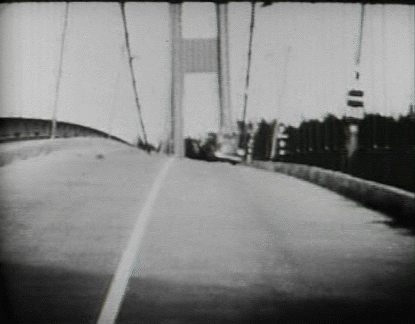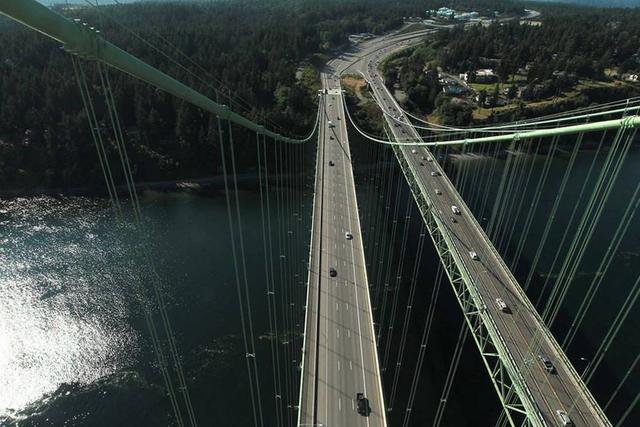Why Does The Bridge Shake Abnormally? Learn About "Carmen Vortex Street"
According to China News Network, around 15:32 on May 5th, the Humen Bridge in Guangdong Province experienced abnormal shaking. The Guangzhou Traffic Police Detachment implemented traffic control on the Humen Bridge, reminding passing vehicles to take a detour. According to the on-site video, there were slight undulating waves on the bridge deck amidst the howling wind.

▲The Humen Bridge experienced abnormal shaking. Graph network
In fact, abnormal shaking or shaking of bridges often occurs - this is an important phenomenon in fluid mechanics called the Karman vortex street. For example, in 2010, the bridge over the Volga River in southern Russia experienced a wave like "strange" shake, with several cars driving on the bridge also constantly swaying.
However, truly making people aware of the significant impact of "Carmen Vortex Street" in the fields of architecture, bridges, aircraft manufacturing design, and shipbuilding is undoubtedly the Tacoma Strait Suspension Bridge Incident in the United States - it is not only the most iconic disaster in modern bridge construction history, but also a classic research case in physics and engineering.

▲The collapse of the Tacoma Strait suspension bridge. According to "Business Insider"
According to Business Insider, the Tacoma Narrows Bridge in Washington, USA was built between 1938 and 1940 and was the world's third longest suspension bridge after the Golden Gate Bridge and the George Washington Bridge at the time. Its designer Leon Moisseff was a leading figure in suspension bridges in the United States in the 1920s and 1930s, and an early promoter of all steel bridges.
Moisseff's "deformation theory" is well-known, according to which the larger the length of a bridge, the greater the allowable deformation. Because of this, Moisseff believed that he could build the suspension bridge lighter, thinner, and longer than before, and this idea was fully reflected in his design plan for the Tacoma Strait Bridge.

▲Leon Moisseff (first from the right) image based on PBS
Unexpectedly, after the lifting of the bridge was completed, there would be slight ups and downs in the main span of the bridge as long as there was a gentle wind blowing at 4 miles per hour. Even during the construction process, workers had already noticed the shaking phenomenon of this bridge.
On November 7, 1940, technicians measured a wind speed of 38 miles per hour at 7:30, which increased to 42 miles per hour two hours later. At this time, the Tacoma Strait suspension bridge had a wave like undulation of over 1 meter on its deck. The crazy twisting caused one side of the road to lift up to 8.5 meters and tilt to 45 degrees.


▲A filming team captured the undulating waves of the Tacoma Strait suspension bridge. Image VICE
In the end, the suspension cables bearing the weight of the bridge broke one after another, and the bridge deck, which had lost its tension, struggled like an angry python in the air. Only four months after its completion and opening to traffic, the main body of the over 120 meter bridge crashed into the Tacoma Strait, causing a large amount of smoke and dust.
According to Forbes, the day after the collapse of the Tacoma Strait suspension bridge, renowned physicist von Kamen felt it was inappropriate and conducted experiments using a model of the Tacoma Strait suspension bridge. As expected, the culprit behind the collapse of the Tacoma Strait suspension bridge was the bridge resonance caused by the Carmen Vortex Street——
Within a certain wind speed range, the airflow passing through the bridge will periodically generate two parallel reverse vortices. Continuous vortices will generate periodic immersion forces on the surrounding bridge. When this immersion force is close to the frequency of bridge vibration, resonance will occur. The stronger the resonance, the greater the amplitude of the bridge's swinging and twisting.

▲Schematic diagram of Carmen vortex street
Of course, at the beginning of the design, in order to be aesthetically pleasing and save investment, Moisseff used lightweight materials and lowered the bridge from a 7.6 meter high steel truss main beam to a 2.4 meter high steel plate beam, which was also one of the reasons for the disaster.
But there is no doubt that the Tacoma Strait Suspension Bridge sounded an alarm for later bridge design and construction. After all, the bridge design community at that time had not yet recognized the serious harm of Carmen Vortex Street, and the design of the bridge was still carried out from the perspective of traditional bridge load-bearing design. In the following decade, bridge aerodynamics and aeroelasticity emerged and further improved.

▲The newly built Tacoma Strait suspension bridge and parallel bridge. According to Bechtel
In 1950, the newly built Tacoma Strait Suspension Bridge was put into operation after rigorous design and construction. The thickness of the track bed was increased to 10 meters, and air holes were added to the road surface to allow air to pass through and prevent the formation of Karman Vortex Street. Standing steadily on the strait, it has a daily traffic volume of up to 60000 vehicles, hence it is also known as the "strong Getty". In 2007, a new parallel bridge was opened, increasing the number of lanes from two to four, making it the fifth longest suspension bridge in the United States today.


